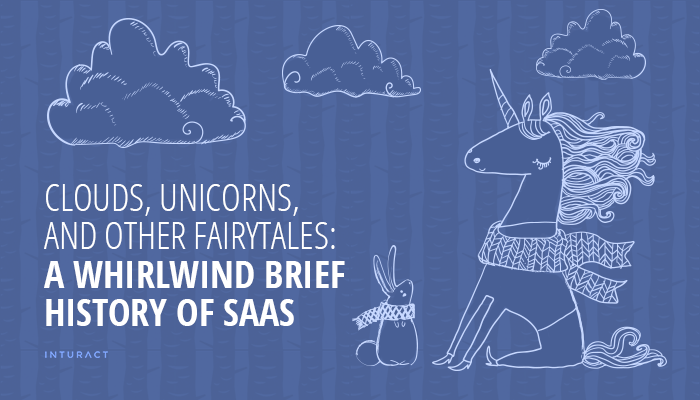 Don’t worry about software cluttering your computer anymore. We’re just going to have it floating up in a cloud until you want to use it. Yes, that’s right. In a cloud. Just say the word when you need access and we will jump on our magic carpet and go grab it for you. No, but really.
Don’t worry about software cluttering your computer anymore. We’re just going to have it floating up in a cloud until you want to use it. Yes, that’s right. In a cloud. Just say the word when you need access and we will jump on our magic carpet and go grab it for you. No, but really.
This is not actually a fantasy. It’s real life, and the cloud exists. It’s just yet another way that technology has upped the ante and made our lives that much easier. But, what does this all mean? How is it that our dreams have actually become reality? In order to understand, we will have to go back to where it all began.
But First -- What is SaaS?
SaaS, aka software as a service, is the ability to use software ‘on-demand’ without having to download it to your computer. Instead of it encroaching on your data plan and hogging all of the room, you are able to access it simply through your trusty internet browser.
In addition, SaaS vendor houses are the ones responsible for maintaining the hardware supporting the application. Users access these applications by leasing the software from said vendors. Not only does this keep the clutter to a minimum on your personal equipment, but it saves you the time of having to update and manage the data on these apps.
Brief History of SaaS
Surprise! This isn’t a completely new idea. Software engineers were experimenting with these ideas way back in the 1960’s. The earlier version of SaaS were known as Application Service Providers (ASP). Here, users also paid for the ability to use an application through their browser. Unfortunately, the technology which allows this to function efficiently wasn’t quite there yet. When a new user wanted access, the ASP vendor would have to manually set-up physical servers for each customer.
This caused the whole process to move a lot slower, which greatly lessened the convenience of the whole thing. Considering that convenience was the entire point, this caused ASP to not have a fighting chance. Not only was the process itself slower, but so were the internet connections. Speeds used to be as low as 200 kilobits per second. Now, the average internet speed is 21 megabits per second.
High speed internet, and the advanced technology of virtual machines, has made SaaS a success. These programs make money where ASP companies did not. They are more dependable, so as a result, more people are signing up. Companies are not only making more money from users, they are also spending less money paying employees.
SaaS removes the need for on-premise software and hardware, which would have to be manually troubleshooted and updated. This in-turn removes the need for the IT techs who would be performing such jobs.
The Ideal SaaS Model
Characteristics that make software most successful include:
- Knowing when to use pay-per-use vs subscription pricing
- All responsibility is managed by the provider, eliminating any IT support costs
- Easy and quick sign-up, ideally not taking any longer than 10-20 minutes
- No novel-length time consuming, intimidating contracts for customers to read
Some examples of successful SaaS companies are:
- Google apps (Google drive, Google docs, Gmail) - also known as “G Suite”: Software developed by Google that allows consumers to email, “hangout”, create/edit/share documents, and keep a calendar, all under 1 account.
- Salesforce: A company focused on cloud computing and customer relationship management solutions.
- Oracle: A company specializing in database software and technology and cloud-based systems.
- Concur: A software providing affordable solutions for business management and travel.
SaaS has made a lot possible for companies and consumers alike. It is a simple, more affordable solution for everyone and allows customers access without the stress.
In other words, SaaS is a fairytale come true.



